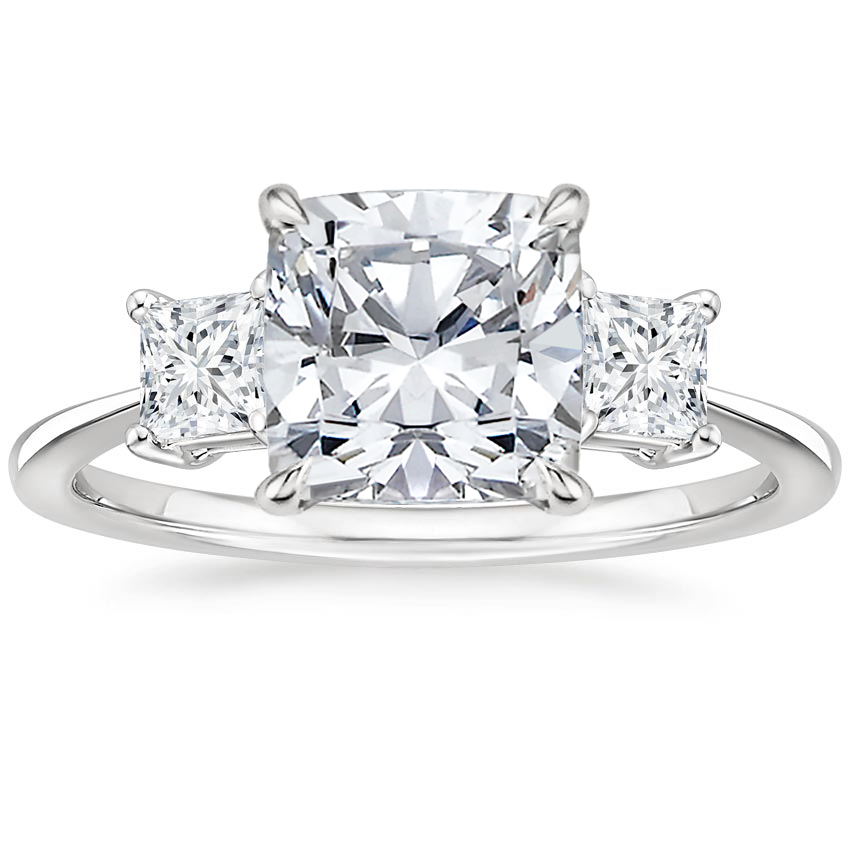
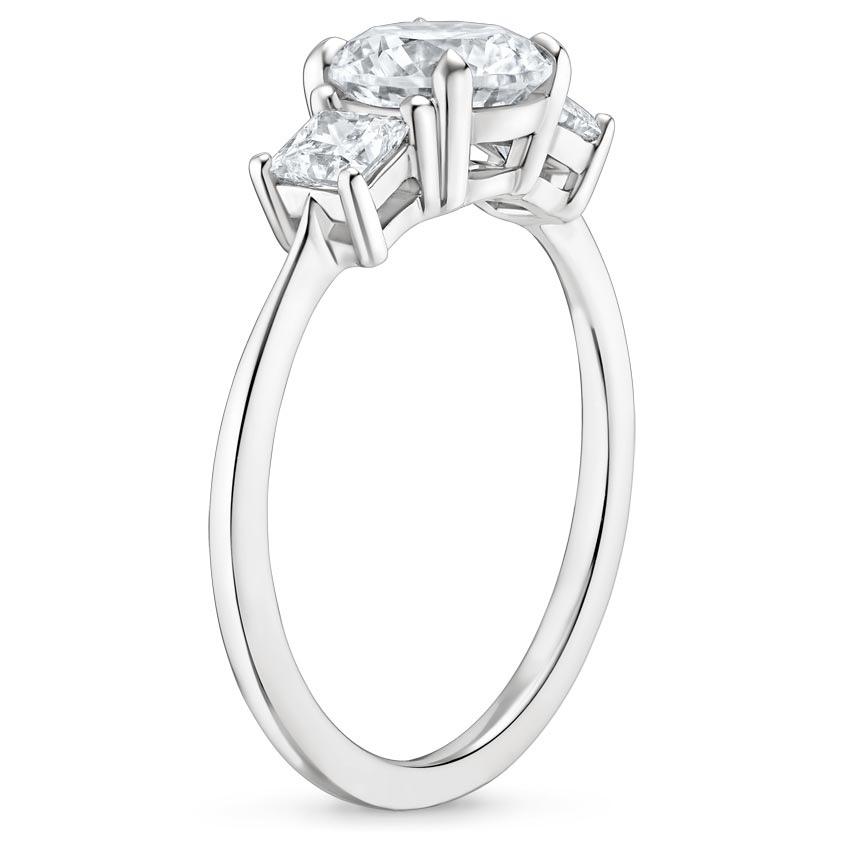
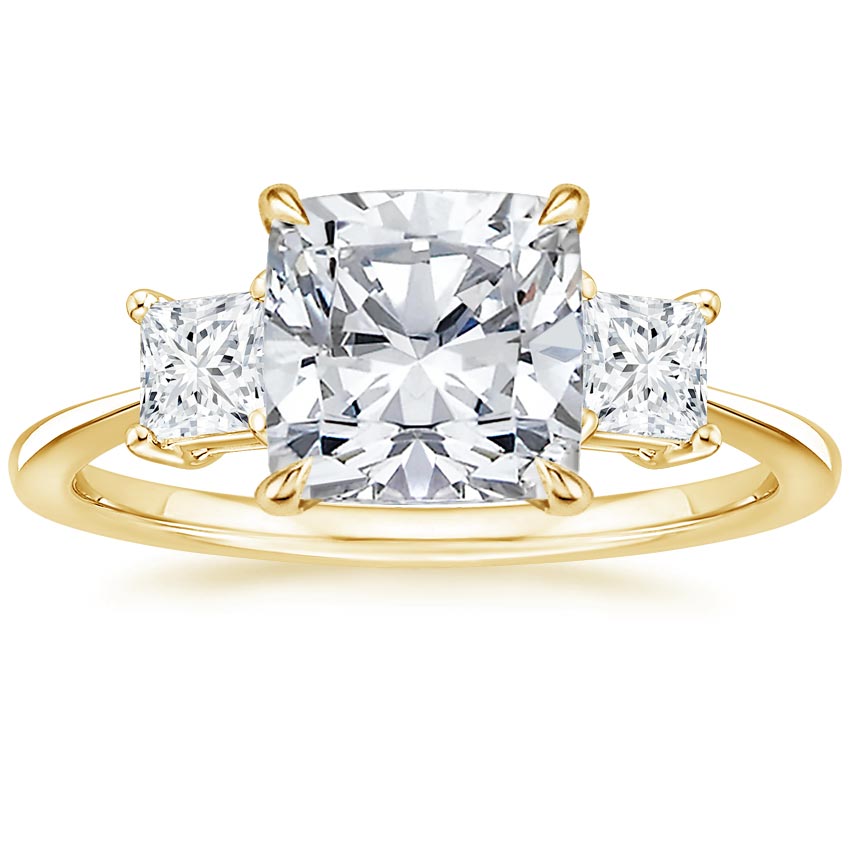
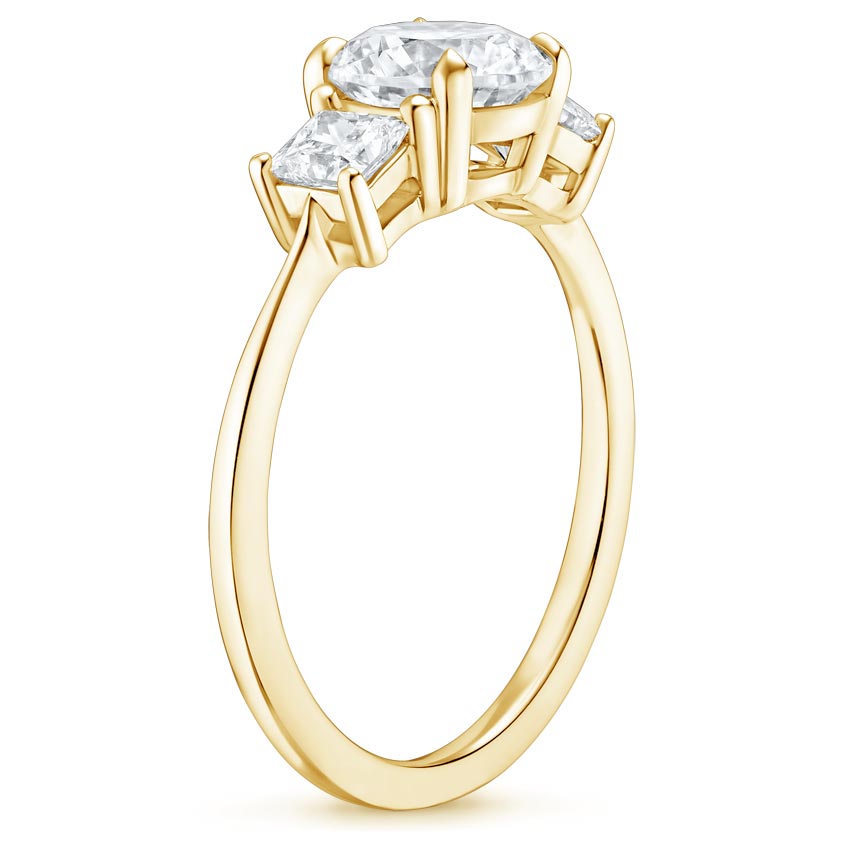

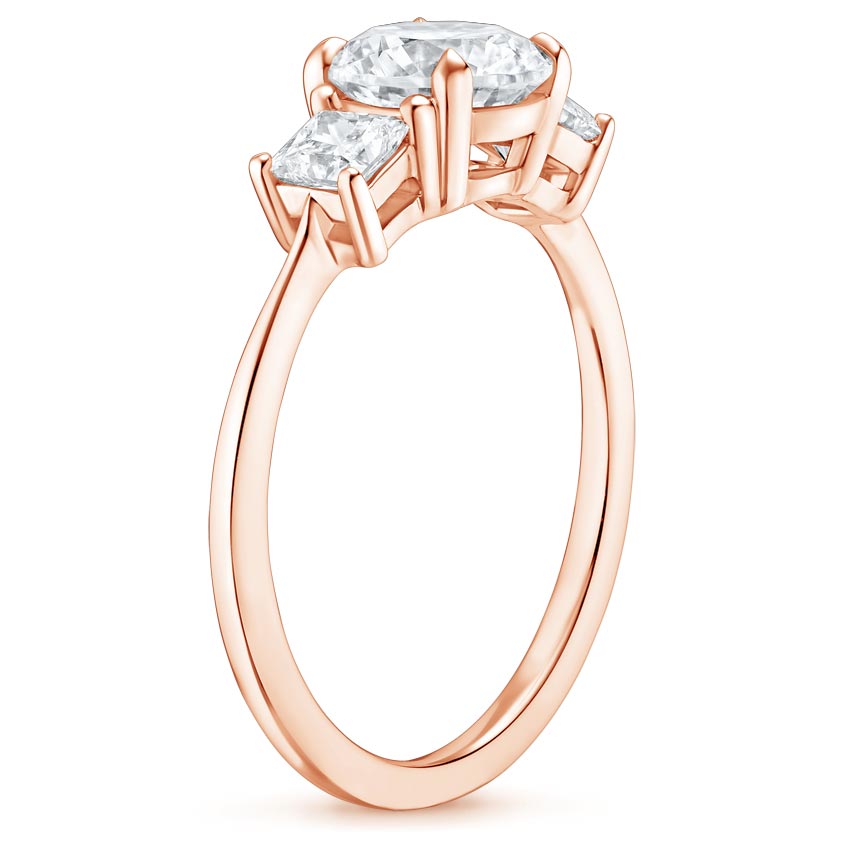
Triplets Cushion Lab Grown Diamond Engagement Ring
Tax included. Shipping calculated at checkout
Description
Elevate your proposal with this magnificent Triplets Cushion Cut Engagement Ring. Featuring princess accent side stones, lab grown diamonds, and a stunning three stone design. Enjoy the beauty and quality of lab grown diamonds at a fraction of the cost.
Material & Details
Our Lab Grown Diamonds are EF colour VVS-VS clarity (all below 1 ct solitaires)
- All 1 ct+ solitaires are IGI/GIA certified & available in options of E/F/G colour and VVS/VS clarity
- Each piece is customized and made to order. Center solitaires can be set according to your preference
- We provide free engraving such as a date/number wherever possible
Diamond Carat Size chart
Compare diamond carat size on this page

Have any questions or design in mind ?
Do you need the same design in earth mined diamond ?
Email - Support@hartine.com
- The production timeline would 20 working days.
- For International orders the transit timeline would be 10 to 12 working days.
- Any further questions about shipping, please reach out to us at support@hartine.com
5% Off On Your First Hartine Diamond Jewellery
Exclusive Offer - Unbeatable Prices on Lab-Grown Diamond Rings!
Dear Valued Customers,
hope this message finds you well. As we continue to strive for excellence in providing you with the finest jewelry pieces, we are thrilled to announce an exclusive offer that you won't want to miss.

Details
FAQ - Frequently asked questions by customers on hartine.
Benefits Of Lab Diamonds Jewellery
There are many benefits of buying lab grown diamond jewellery, not the least of which is affordability. Many couples choose lab created diamonds for that reason alone. However, there are also other benefits to man made diamonds, such as:
They are eco-friendly. Since they aren’t mined, there is no damage to the Earth in the form of fossil fuel usage, making them a more sustainable option given how much diamonds are in demand.
They are guilt-free. It’s no secret that diamond mining has a bloody history, but lab grown diamonds can be purchased without any feelings of guilt or unease. You can know exactly where they come from and how they were made, with no murky origins that might include violations of human rights.
They come in many colors. This might only be attractive to some, but if you like to beat your own drum and don’t necessarily want a white diamond, you can get diamonds of other colors, too.
They aren’t a fake imitation. Lab diamonds are diamonds. No more, no less. They aren’t made of another material to look like a simulated diamond, they simply are what they are. The real thing, made by man.
Do Lab Grown Diamond jewellery have resale value?
The short answer is they are worth what you’re willing to pay for them. Resale value for lab diamonds is similar to the resale value of naturally mined diamonds. Hartine diamonds provide 90% Resale / Buyback Policy.
Are Lab Diamonds More Expensive?
Lab-grown diamonds are not more expensive than natural diamonds. In fact, they can be up to 80% cheaper than natural, mined diamonds!
Lab-grown diamonds look exactly the same as a natural diamond, but for a much more affordable price. If you are after a larger diamond for your engagement ring, then you may want to consider a lab-grown diamond, as you will get a lot more value for your money.
Why choose us?
- Unbeatable Prices: We understand the importance of value without compromising on quality. Our commitment to offering competitive prices ensures that you get the best deal possible.
- Exceptional Quality: Each lab-grown diamond in our collection is carefully selected and expertly crafted to meet the highest standards of quality and brilliance.
- Ethical and Sustainable: By choosing lab-grown diamonds, you can rest assured that your purchase supports ethical and sustainable practices, without any compromise on beauty or durability.
- Wide Selection: Whether you're searching for a classic solitaire ring, a glamorous halo design, or a custom creation, our diverse collection has something to suit every style and preference.
- Exceptional Service: Our dedicated team is here to assist you every step of the way, ensuring a seamless and enjoyable shopping experience from start to finish.
Don't miss out on this incredible opportunity to own a stunning lab-grown diamond ring at a better price than you'll find elsewhere.

Diamond Colour Scale
As the GIA explains, ‘diamond colour actually means lack of colour’. A high diamond colour grade is determined by the lack of colour present within the diamond, while poor colour grades can appear with a yellow or brownish tint. Using the diamond colour scale below, notice the very subtle difference in colour between diamonds graded D to F colour. Then consider the difference between G to H colour, where you’ll start to see a yellow tint, strengthening in intensity right down to Z.

Both Are Diamonds
Two specimens of faceted crystalized carbon - both are crystal clear and give off a kaleidoscope of spectral colors in direct light. They appear to be identical. One, however, is a billion or more years old and the other was recently grown in a laboratory.
Both are diamonds, of course. The first is a natural diamond created by forces deep within the young Earth. The second is from a laboratory and possesses essentially the same chemical, physical and optical properties as its natural counterpart.
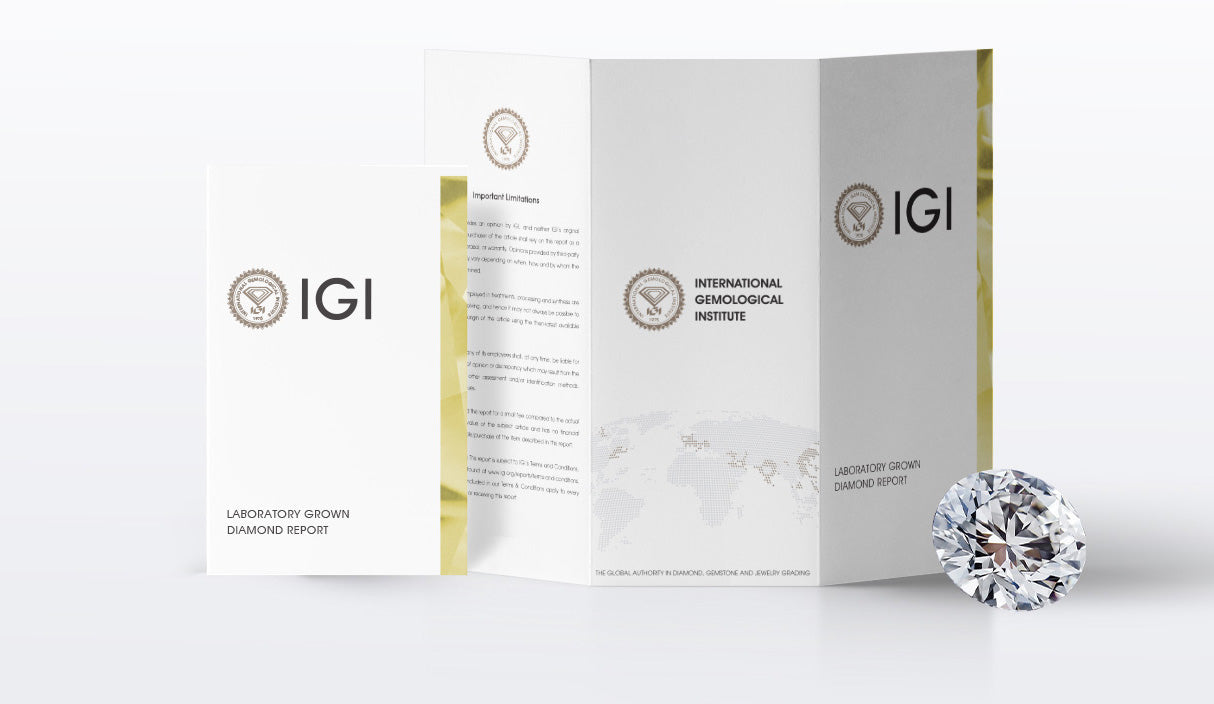
Certified Lab-Grown Diamonds
After a diamond is cut, whether natural or lab grown, it must be sent to a gemological laboratory in order to become a certified diamond. It is important to note that not all diamonds are certified, and purchasing a certified diamond is the best way to ensure your diamond’s quality.
Most lab grown diamonds available on the market today are certified by IGI or GIA and are graded for cut, clarity, carat weight and more, just like natural diamonds.

Packaging
We are committed to delivering the best experience possible, and that includes making sure your order arrives safely and beautifully packaged. Each package is thoughtfully prepared with care and attention to detail.
Diamond Colour Scale
As the GIA explains, ‘diamond colour actually means lack of colour’. A high diamond colour grade is determined by the lack of colour present within the diamond, while poor colour grades can appear with a yellow or brownish tint. Using the diamond colour scale below, notice the very subtle difference in colour between diamonds graded D to F colour. Then consider the difference between G to H colour, where you’ll start to see a yellow tint, strengthening in intensity right down to Z.
Both Are Diamonds
Two specimens of faceted crystalized carbon - both are crystal clear and give off a kaleidoscope of spectral colors in direct light. They appear to be identical. One, however, is a billion or more years old and the other was recently grown in a laboratory.
Both are diamonds, of course. The first is a natural diamond created by forces deep within the young Earth. The second is from a laboratory and possesses essentially the same chemical, physical and optical properties as its natural counterpart.
Certified Lab-Grown Diamonds
After a diamond is cut, whether natural or lab grown, it must be sent to a gemological laboratory in order to become a certified diamond. It is important to note that not all diamonds are certified, and purchasing a certified diamond is the best way to ensure your diamond’s quality.
Most lab grown diamonds available on the market today are certified by IGI or GIA and are graded for cut, clarity, carat weight and more, just like natural diamonds.
Packaging
We are committed to delivering the best experience possible, and that includes making sure your order arrives safely and beautifully packaged. Each package is thoughtfully prepared with care and attention to detail.




This product has no reviews yet.
Outstanding collection !!! every woman should have a piece of hartine jewellery.
I was proposed to with the most beautiful engagement ring from Hartine!!! My fiancé did a great job.
The Hartine team was very helpful and met my every need, excellent customer service and positive attitude. I will certainly be back again for my fiancee's future jewelry needs!

100% Lab Grown Diamonds
Lab grown diamonds are exactly the same as mined diamonds, except for their origin. Not one shovelful of earth is moved to create New Dawn Diamonds®, yet their beauty and brilliance will symbolize your love forever.













